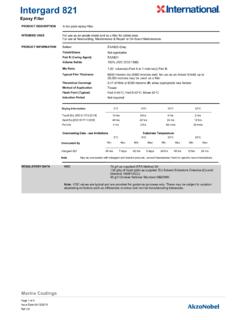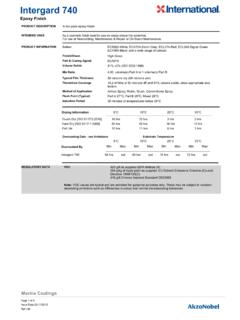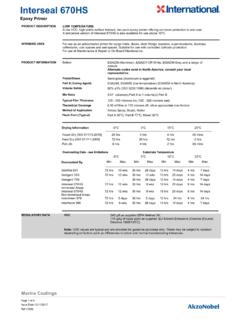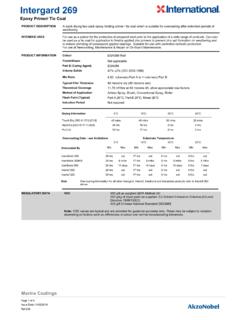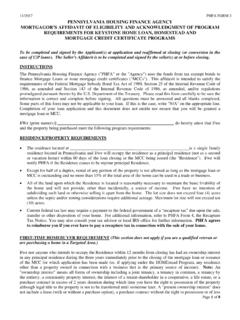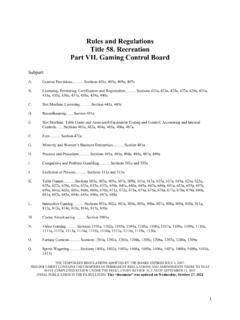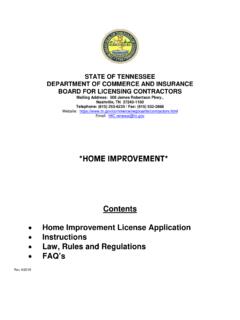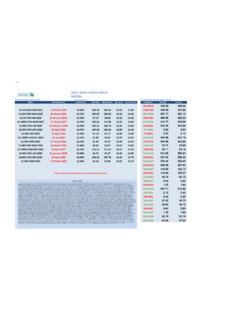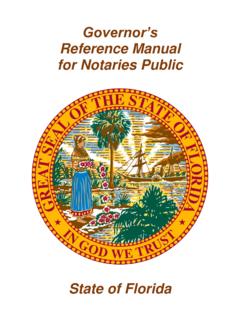Transcription of Interbond 201 - AkzoNobel
1 Interbond 201. Epoxy Primer/Finish PRODUCT DESCRIPTION TEMPERATE. A hard wearing, surface tolerant, two pack epoxy primer/finish offering corrosion protection in one coat. A low temperature version of Interbond 201 is available for use down to -5 C. INTENDED USES As an anticorrosive primer/finish for decks, deck fittings and cargo holds. For use at Maintenance & Repair or On Board Maintenance. PRODUCT INFORMATION Colour KDL549-Signal Green, KDL274-Red, KDK724-Storm Grey, KDF684-Surf Grey Finish/Sheen Semi-gloss Part B (Curing Agent) KDA100 (temperate). Volume Solids 74% 2% (ISO 3233:1998). Mix Ratio volume(s) Part A to 1 volume(s) Part B. Typical Film Thickness 150 microns dry (203 microns wet). Theoretical Coverage m /litre at 150 microns dft, allow appropriate loss factors Method of Application Airless Spray, Brush, Roller Flash Point (Typical) Part A 28 C;Part B 34 C;Mixed 29 C (Product produced and supplied in North America has flash points of Part A 43 C , Part B 39 C and Mixed 39 C.)
2 Respectively due to locally sourced solvents. There is no detrimental effect on product performance.). Induction Period 30 minutes at temperatures below 25 C for KDA100. Drying Information 5 C 10 C 25 C 35 C. Touch Dry [ISO 9117/3:2010] 9 hrs 7 hrs 4 hrs 3 hrs Hard Dry [ISO 9117-1:2009] 47 hrs 29 hrs 9 hrs 5 hrs Pot Life 8 hrs 7 hrs 4 hrs 2 hrs Overcoating Data - see limitations Substrate Temperature 5 C 10 C 25 C 35 C. Overcoated By Min Max Min Max Min Max Min Max Interbond 201 24 hrs 28 days 18 hrs 28 days 6 hrs 28 days 4 hrs 15 days Ballast Holds Interbond 201 24 hrs 3 mths 18 hrs mths 6 hrs 2 mths 4 hrs 28 days Interbond 501 24 hrs 21 days 18 hrs 21 days 6 hrs 21 days 4 hrs 21 days Intergard 740 24 hrs 28 days 18 hrs 20 days 6 hrs 14 days 4 hrs 7 days Intersheen 579 24 hrs 3 days 18 hrs 3 days 6 hrs 3 days 4 hrs 3 days Interthane 990 - - - - 9 hrs 24 hrs 5 hrs 24 hrs Note Stated figures for pot life, drying times and overcoating intervals are for temperate product.
3 For low temperature product data see separate data sheet. REGULATORY DATA VOC 279 g/lt as supplied (EPA Method 24). 229 g/kg of liquid paint as supplied. EU Solvent Emissions Directive (Council Directive 1999/13/EC). 274 g/lt Chinese National Standard GB23985. Note: VOC values are typical and are provided for guidance purposes only. These may be subject to variation depending on factors such as differences in colour and normal manufacturing tolerances. Marine Coatings Page 1 of 4. Issue Date:06/11/2017. Ref:430. Interbond 201. Epoxy Primer/Finish CERTIFICATION When used as part of an approved scheme, this material has the following certification: Food Contact - Carriage of Grain (NOHA). Fire Resistance - Surface Spread of Flame (Exova Warringtonfire). Fire Resistance - Smoke & Toxicity (Exova Warringtonfire).
4 Fire Resistance - Marine Equipment Directive compliant Consult your International Paint representative for details. SYSTEMS AND Consult your International Paint representative for the system best suited for the surfaces to be protected. COMPATIBILITY When using in cargo holds, consult the Interbond 201 Cargo Hold Application Guidelines. SURFACE PREPARATIONS Use in accordance with the standard Worldwide Marine Specifications. All surfaces to be coated should be clean, dry and free from contamination. High pressure fresh water wash or fresh water wash, as appropriate, and remove all oil or grease, soluble contaminants and other foreign matter in accordance with SSPC-SP1 solvent cleaning. MAJOR REFURBISHMENT. Abrasive blast clean to Sa2 (ISO 8501-1:2007). If oxidation has occurred between blasting and application of Interbond 201, the surface should be reblasted to the specified visual standard.
5 Surface defects revealed by the blast cleaning process, should be ground, filled, or treated in the appropriate manner. Interbond 201 may be applied to surfaces prepared to International Paint Hydroblasting Standard HB2 which have flash rusted to no worse than HB2M. REPAIR/OBM - Exposed steel and corrosion: Hand or power tool clean to a minimum St2 (ISO 8501-1:2007).Note, all scale must be removed and areas which cannot be prepared adequately by chipping or needle gun should be spot blasted to a minimum standard of Sa2. (ISO 8501-1:2007). Typically this would apply to C or D grade steel in this standard. Or - Abrasive blast clean to Sa2 (ISO 8501-1:2007). If oxidation has occurred between blasting and application of Interbond 201, the surface should be reblasted to the specified visual standard. Surface defects revealed by the blast cleaning process, should be ground, filled, or treated in the appropriate manner.
6 Or - Interbond 201 may be applied to surfaces prepared to International Paint Hydroblasting Standard HB2 which have flash rusted to no worse than HB2M. Interbond 201 is suitable for overlap onto most aged coating systems. Loose or flaking coatings should be removed back to a firm edge and Interbond 201 should be applied to overlap the existing coating by 2-3 centimetres (one inch). Glossy epoxies and polyurethanes may require abrasion. Intact Coatings: This product may be applied as a full coat over most generic types of paint that have been aged for at least 3. months. It is advisable that a small trial be carried out before applying a full coat over certain generic types. Consult International Paint for acceptable generic types and extent of surface preparation required. Accurate film thickness control is essential, particularly when overcoating existing systems.
7 Wet Holds Abrasive blast clean to Sa2 (ISO 8501-1:2007). or - Interbond 201 may be applied to surfaces prepared to International Paint Hydroblasting Standard HB2 which have flash rusted to no worse than HB2 L. Notes on Overcoating at Repair/OBM. Interthane 990 may be applied to weathered (chalked) temperate Interbond 201 more than 3 months old, provided that the surface is treated by fresh water washing to remove all dirt and contamination followed by degreasing according to SSPC-SP1 solvent 990 should not be used to overcoat Interbond 201 low temperature. For good cosmetics Interbond 201 low temperature should be overcoated with Intergard 740 or Intersheen 579. Consult your International Paint representative for specific recommendations. NOTE. For use in Marine situations in North America, the following surface preparation standards can be used: SSPC-SP10 in place of Sa2 (ISO 8501-1:2007).
8 SSPC-SP6 in place of Sa2 (ISO 8501-1:2007). SSPC-SP2 in place of St2 (ISO 8501-1:2007). Marine Coatings Page 2 of 4. Issue Date:06/11/2017. Ref:430. Interbond 201. Epoxy Primer/Finish APPLICATION. Mixing Material is supplied in 2 containers as a unit. Always mix a complete unit in the proportions supplied. (1) Agitate Base (Part A) with a power agitator. (2) Combine entire contents of Curing Agent (Part B) with Base (Part A) and mix thoroughly with power agitator. Thinner International GTA220. Thinning is not normally required. Consult the local representative for advice during application in extreme conditions. Do not thin more than allowed by local environmental legislation. Airless Spray Recommended Tip Range mm (21-33 thou). Total output fluid pressure at spray tip not less than 176 - 246 kg/cm (2500 - 3500 ).
9 Conventional Spray Application by conventional spray is not recommended. Brush Application by brush is recommended for small areas only. Multiple coats may be required to achieve specified film thickness. Roller Recommended Cleaner International GTA220/GTA822. Work Stoppages and Cleanup Do not allow material to remain in hoses, gun or spray equipment. Thoroughly flush all equipment with International GTA220/GTA822. Once units of paint have been mixed they should not be resealed and it is advised that after prolonged stoppages work recommences with freshly mixed units. Clean all equipment immediately after use with International GTA220/GTA822. It is good working practice to periodically flush out spray equipment during the course of the working day. Frequency of cleaning will depend upon amount sprayed, temperature and elapsed time, including any delays.
10 Do not exceed pot life limitations. All surplus materials and empty containers should be disposed of in accordance with appropriate regional regulations /legislation. Welding In the event welding or flame cutting is performed on metal coated with this product, dust and fumes will be emitted which will require the use of appropriate personal protective equipment and adequate local exhaust ventilation. In North America do so in accordance with instruction in ANSI/ASC "Safety in Welding and Cutting.". SAFETY All work involving the application and use of this product should be performed in compliance with all relevant national Health, Safety & Environmental standards and regulations . Prior to use, obtain, consult and follow the Material Safety Data Sheet for this product concerning health and safety information.
